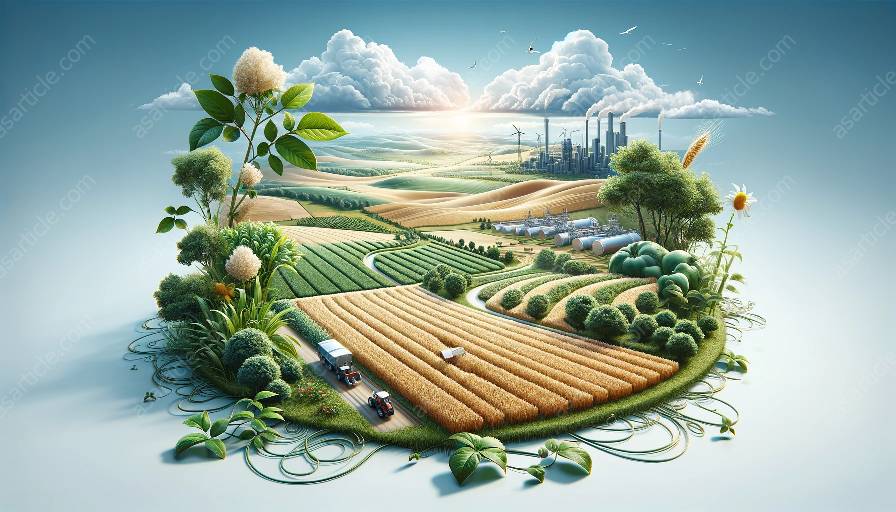The use of blockchain technology in agriculture has the potential to revolutionize the industry, particularly in the context of agricultural informatics, GIS applications, and agricultural sciences. By leveraging blockchain technology, farmers, distributors, and other stakeholders can benefit from increased transparency, efficiency, and security in their operations.
How Blockchain Technology Works in Agriculture
Blockchain technology, most commonly known for its use in cryptocurrency, is a distributed ledger system that records transactions across multiple computers. In agriculture, blockchain can be used to create tamper-proof records of every stage in the supply chain, from planting and harvesting to distribution and sale.
Enhancing Agricultural Informatics with Blockchain
The integration of blockchain technology with agricultural informatics enhances data management in the industry. By utilizing blockchain, farmers can securely store and share information about crop yields, soil quality, and weather patterns. This can improve decision-making, resource allocation, and ultimately increase productivity.
GIS Applications and Blockchain in Agriculture
Geographic Information Systems (GIS) play a crucial role in mapping and analyzing spatial data relevant to agriculture. By combining GIS applications with blockchain, agricultural stakeholders can accurately track the geographical origin of products, monitor transportation routes, and ensure compliance with regulations. This integration enhances traceability and creates a more robust food supply chain.
Benefits of Blockchain in Agricultural Sciences
Blockchain technology offers numerous benefits to agricultural sciences, including:
- Transparency: All transactions recorded on the blockchain are transparent and immutable, enabling stakeholders to trace the provenance of agricultural products and guarantee their authenticity.
- Efficiency: Streamlined processes and reduced paperwork lead to increased efficiency in supply chain management, reducing the risk of errors and fraud.
- Security: The decentralized nature of blockchain ensures high levels of security, protecting sensitive agricultural data from potential breaches and cyberattacks.
- Trust: Trust is built among all participants in the agricultural supply chain, as blockchain technology fosters greater accountability and reliability.
Real-Life Applications of Blockchain in Agriculture
Several real-life applications of blockchain technology in agriculture have already been implemented, showcasing its potential:
- Supply Chain Transparency: Blockchain enables consumers to trace the journey of agricultural products from farm to table, providing insights into the production process and ensuring food safety.
- Smart Contracts: Farmers and distributors can utilize smart contracts on the blockchain to automate agreements, payments, and compliance measures, reducing transaction costs and disputes.
- Quality Assurance: Blockchain can be used to verify the quality and authenticity of agricultural goods, reducing the spread of counterfeit products and increasing consumer confidence.
Conclusion
The use of blockchain technology in agriculture holds immense promise for the industry, particularly in the realms of agricultural informatics, GIS applications, and agricultural sciences. By embracing blockchain, agricultural stakeholders can unlock new levels of transparency, efficiency, and security, ultimately transforming the way agricultural products are produced, distributed, and consumed.

